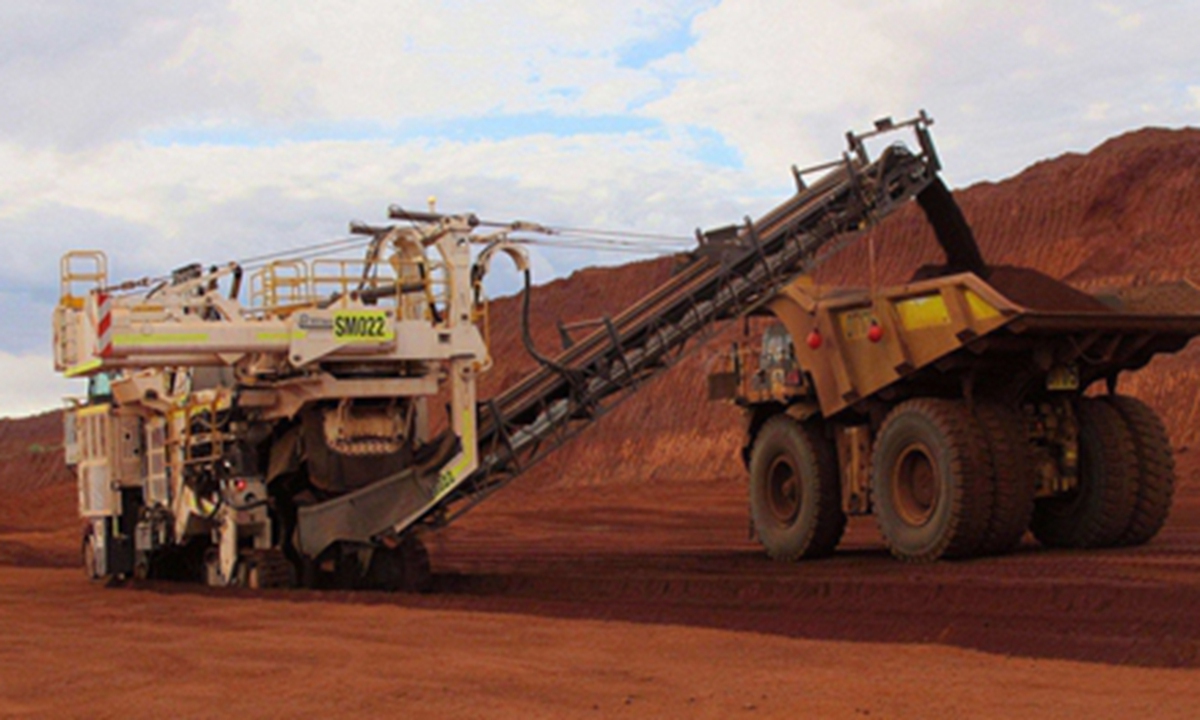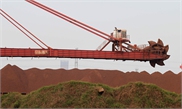Australian iron ore trade strong ahead of Chinese New Year, driven by seasonal hoarding

An iron ore mining site in Australia Photo: cnsphotos
Australian iron ore exports to China remained strong in January despite the backdrop of rising market prices due to multiple factors including weather disruption and labor shortage concerns.
Industry analysts said the proportion of Australian iron ore in China's total iron ore imports may be reduced to below 60 percent in 2022 for the first time since 2015, especially as China is diversifying its sources of supplies and deepening industry upgrading while pursuing low-carbon targets.
Iron ore prices have jumped significantly in the week prior to the Chinese New Year with traders and producers stocking up on raw materials in preparation for what could be a bigger gap between supply and demand.
S&P Global Platts assessed the 62% Fe Iron Ore Index at $147 per ton on Friday, the highest in five months.
The price was also reflected in the rising imports in China in recent weeks. According to data from industry data platform Mysteel, the total inventory of iron ore imported by steel mills across China reached about 117.57 million tons this week, an increase of 470,200 tons from the previous month.
Speaking to the Global Times about the market price surge, a source with Rio Tinto Group told the Global Times on Saturday that the price increase could be related to seasonal speculation and hoarding.
"Every year before the Spring Festival, there will be hoarding [in China]," the source said.
While the Anglo-Australian mining group has ramped up efforts to produce and export iron ore, it is currently reaching a bottleneck of production capacity due to multiple factors including potential disruption from not having enough workers amid the pandemic restrictions in West Australia where the outbreak continues to spread, the source added.
But despite the challenges, the firm is still producing at full capacity and production might not be affected.
The company's shipment guidance for 2022 is at 320 million-335 million tons, roughly the same level as 2021.
In addition to Rio Tinto, the two other major global miners - Australia-based BHP Billiton and Brazil's Vale - announced their iron ore production guidance targets for 2022, which maintained the existing production forecast.
Since 2015, China's iron ore imports from Australia and Brazil have accounted for nearly 80 percent of all imports, of which imports from Australia have exceeded 60 percent, according to media reports.
Bilateral relations have soured recently due to Australia's provocative attitude toward China, which has caused disruption for trade activities. Iron ore exports are among the few remaining products that are still in high demand in China, partly due to the needs of the domestic construction sector.
However, the import proportion from Australia in 2022 is likely to drop below 60 percent, having been 61.6 percent in 2021 and 62.5 percent in 2020, an industry insider told the Global Times on Saturday on condition of anonymity.
In response to the surging iron ore prices, the National Development and Reform Commission issued a document on Friday pledging to further crack down on behavior such as price gouging and malicious speculation while taking more effective measures to ensure price stability.
Other measures for securing a sustainable supply of iron ore resources may also be expected, including further diversification of sources of supplies, especially from domestic mines, Wang Guoqing, research director at Beijing Lange Steel Information Research Center, told the Global Times on Saturday.
The increase in the proportion of electric furnace steel is also one of the directions for achieving not only iron ore replacement, but also low carbon and environmental protection plans, Wang said.

